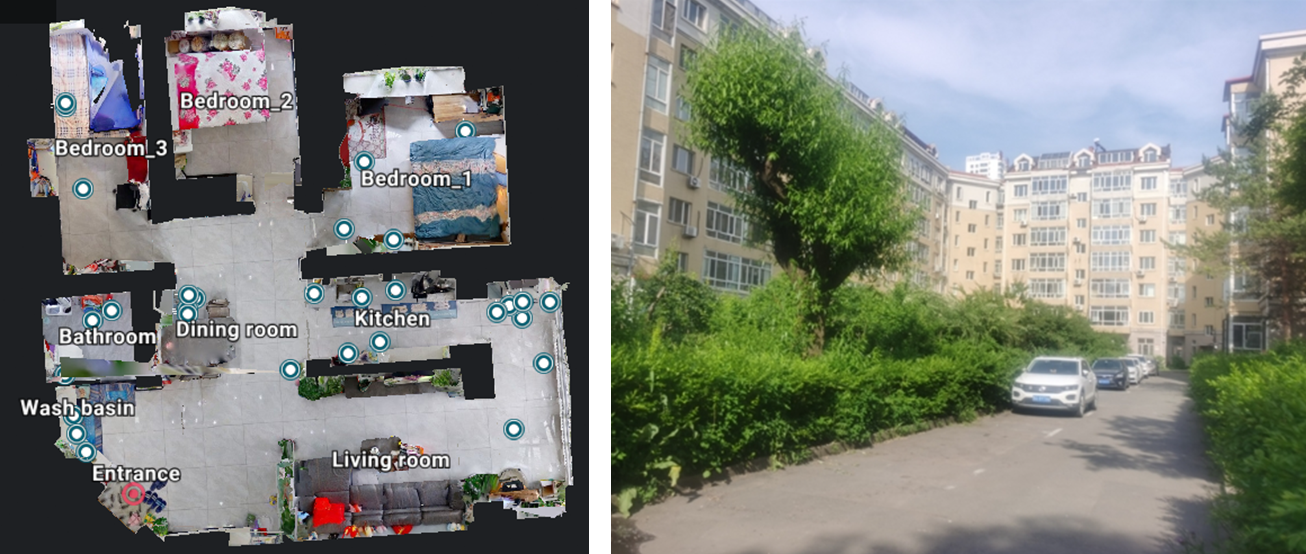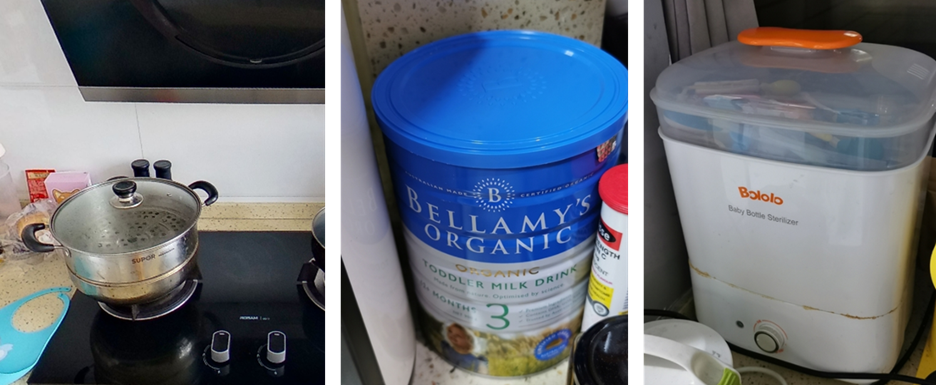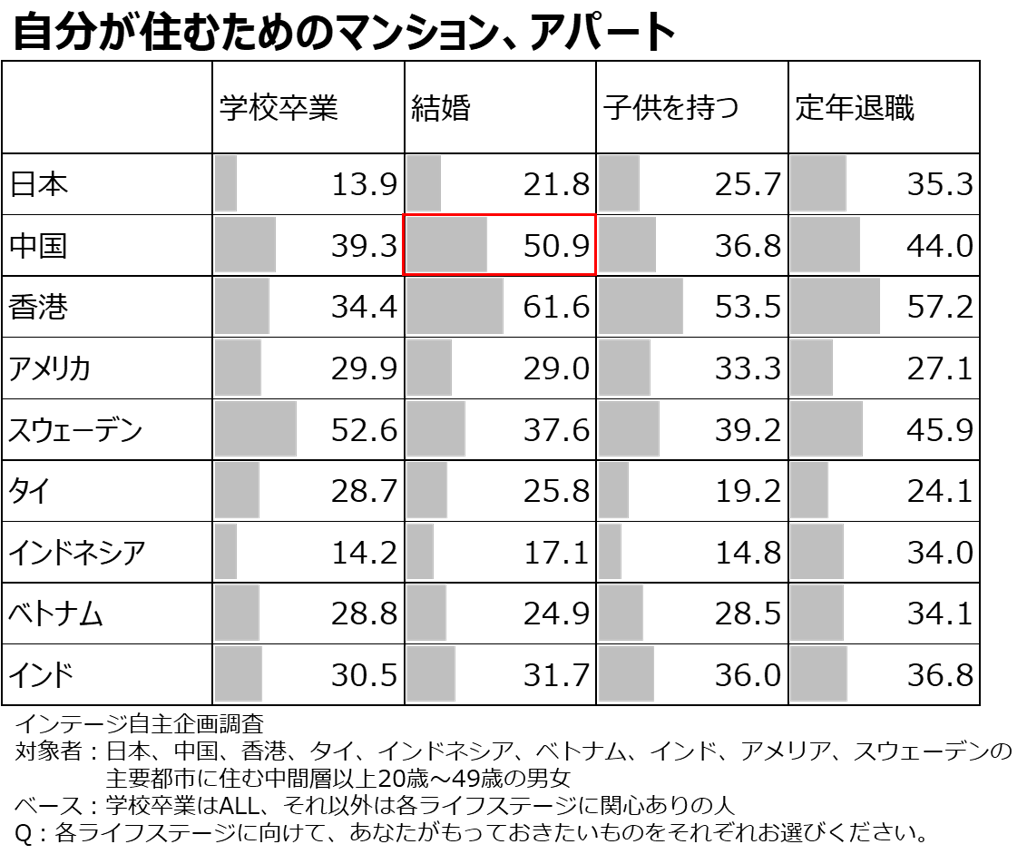[China: World Residence Tour] Demand for Early Education in a Competitive Society
- Release date: Nov 10, 2022
- Update date: Sep 10, 2025
- 4941 Views
China is often described as a competitive society. Parents from the post-80s and post-90s generations, who are raising children, experienced particularly intense competition as they belong to the third baby boom generation. Consequently, early childhood education in China is now more important than ever. This time, we'll explore this phenomenon by introducing Chinese consumers registered with Consumer Life Panorama.
Early education
Early childhood education refers narrowly to the education of children aged 0-3, and broadly to that of children up to age 6. There is a theory that the period from 0 to 3 years old is particularly crucial for forming habits, developing thinking methods, and fostering intellectual growth, serving as a foundational stage for future development. Early education refers to the practice of developing a child's intellectual capacity and potential at an early stage during this period. This includes helping children acquire good daily habits, training their thinking methods for future academic learning, and nurturing intellectual curiosity and aesthetic sensibilities. The goal is to promote the child's comprehensive development.
While the term “early education” may be less familiar in Japan, its importance is increasingly recognized among parents in China, especially recently. In Japan, the idea of enrolling young children in extracurricular activities carries little connotation of preparing them to succeed in a competitive society. In China, however, it is viewed as a crucial part of a child's education.
The Background Behind the Emphasis on Early Education
Why is early education so highly valued in China in the first place? In my estimation, there are primarily two reasons.
First, I'd like to explain starting with the population structure. China has experienced three baby booms to date. The current core educational cohort, aged 25 to 35, consists of those born during the third baby boom. Having a large population within the same generation means competition is fiercer than in previous generations, no matter what you pursue. Furthermore, looking at the population share of those under 10 years old in the chart below, China's share is approximately 12%, higher than Japan's. Parents who experienced intense competition from a young age likely place greater emphasis on early education than previous generations, wanting their children to avoid falling behind others.

Population Structure of China and Japan
Source: Global Market Surfer (“Population by Sex and Age Group and Population Composition Ratio (10-Year Intervals)_China (2020 Estimates)”)
Second, China's transformation into a competitive society stems not only from demographic challenges but also from issues within its higher education system. The primary factor is the “5:5 stream system” implemented during high school entrance exams. This system, long in place in China, was only abolished in 2022. After graduating from middle school, students taking the unified high school entrance exam were “streamed”: the top 50% qualified for regular high schools, while the bottom 50% could only attend vocational high schools. Moreover, after overcoming the high school entrance hurdle, university admission awaits, leaving no room for complacency. Even by global standards, China's university enrollment rate of around 38% is not particularly high. The competition ratio for prestigious universities and key institutions is even more intense.
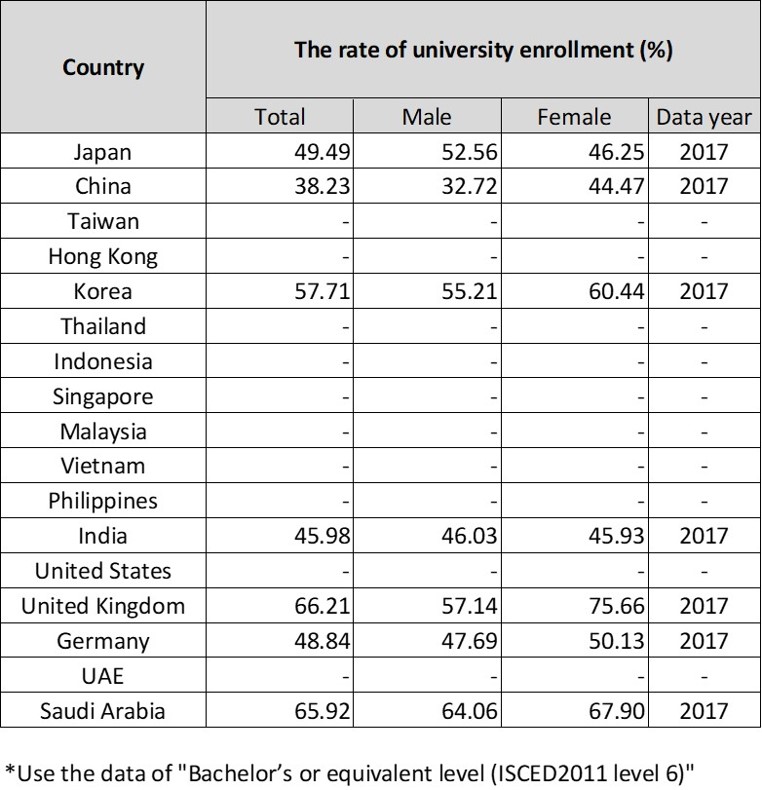
University enrollment rate in China
(Source: Global Market Surfer (“Four-year university enrollment rate _7 countries (2017)”)
Amidst China's intense academic competition, often called the “exam war,” every parent shares the mindset of “not letting their child lose at the starting line.” The question is where to set that starting line. Ultimately, even before formal schooling begins, parents start preparing their children for future exam battles, making early education increasingly crucial.
The Current State of Early Education as Seen Through Consumer Life Panorama
Even in China, where dual-income households are common, some couples manage childcare together despite busy schedules. Parents often take the lead in early childhood education. This involves both home-based activities and external programs. In particularly conscientious families, early education is approached systematically with clear objectives.
For example, in Consumer Life Panorama, several households have a small table like the one shown on the left below. Children can play with blocks on it. Using the included blocks to build and play fosters children's creativity. Plus, adding the lid allows for drawing, making it a two-for-one deal. The middle photo shows a picture book shelf. Children's picture books contain not only stories but also foundational knowledge for understanding the world. The right photo shows a vehicle puzzle. This is designed to train children's concentration.

An Example of Early Education at Home (Source: Consumer Life Panorama)
What is Consumer Life Panorama?
This is a website-type database that has accumulated visual data on more than 1,000 sei-katsu-sha from 18 countries around the world. The database includes many 3D models of living environments and 2D data of items owned by each sei-katsu-sha, and is useful for understanding overseas sei-katsu-sha, which is difficult to grasp using only letters and numbers.
Using visual data such as those cited in this column,
Compare the differences in the attributes of overseas consumers
To get a realistic understanding of the actual usage of each category
To understand the overall lifestyle of target consumers
etc., can be utilized as a “no-go” home visit survey.
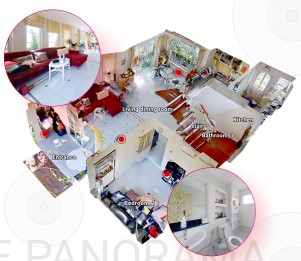
Children are active, so they can't stay home and quietly take lessons all the time. Therefore, as shown in the diagram below, spaces for physical activity are also provided within the home.
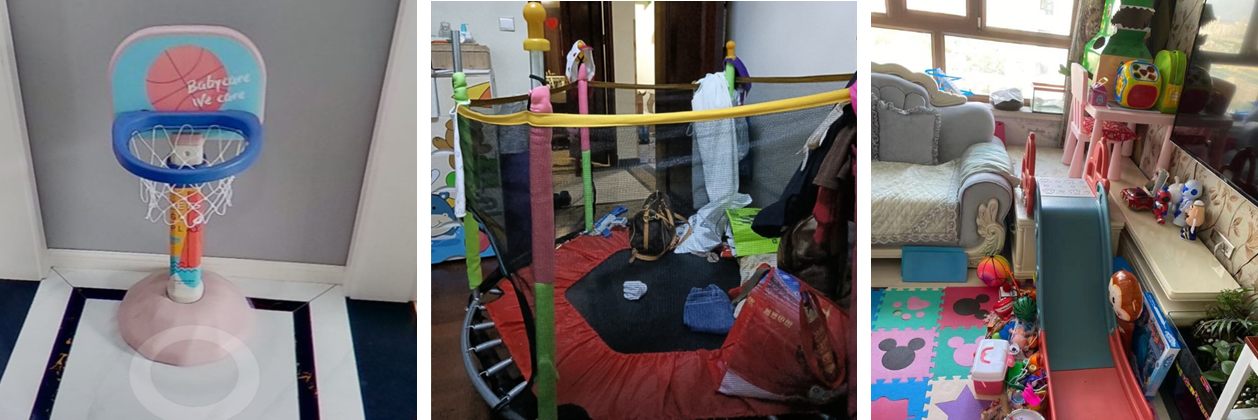
Places for children to move their bodies at home (Source: Consumer Life Panorama)
Not only homes, but the use of external facilities has also increased in recent years. Here, using the case of a conscious Shanghai household, we will explain using the information compiled in Consumer Life Panorama about that household's daily activities on “May Day” (see figure below).
This household has dual-income parents, so weekdays are busy. On weekends, they typically take their child out for early education activities every week.
In the morning, Dad drives the kids to basketball class. Dad himself loves basketball, and with the goal of improving the kids' concentration and language skills, he takes them to weekly basketball practice sessions coached by foreigners.
In the afternoons, we also have weekly Lego classes for the children's cognitive development. After that, we go to the park to let the kids get some exercise before heading home. This household basically revolves around the children outside of work.
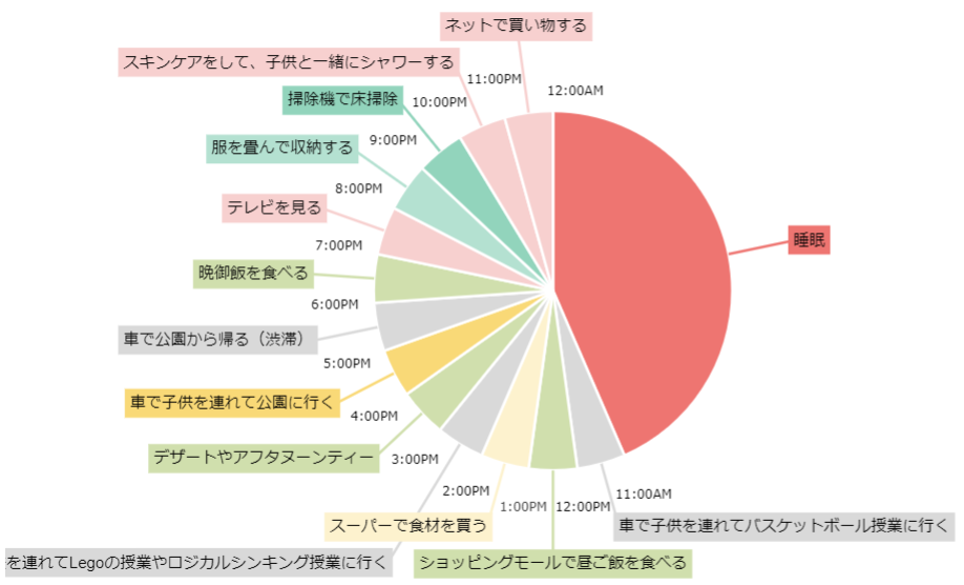
A Day in the Life of a Shanghai Family on Holiday (Source: Consumer Life Panorama)
In China, the early education industry has experienced rapid growth, particularly in recent years. The reason today's parenting households focus on early education is not only due to competitive pressures but also because, having received higher-quality education than previous generations, they are less resistant to scientifically-based approaches for better child development. Consequently, they are also seeking high-quality educational content. Some high-income households are not satisfied with domestic Chinese content alone and have a demand for purchasing high-quality content from overseas. Among the author's friends, there are families who buy Japanese picture books for their children to read.
-
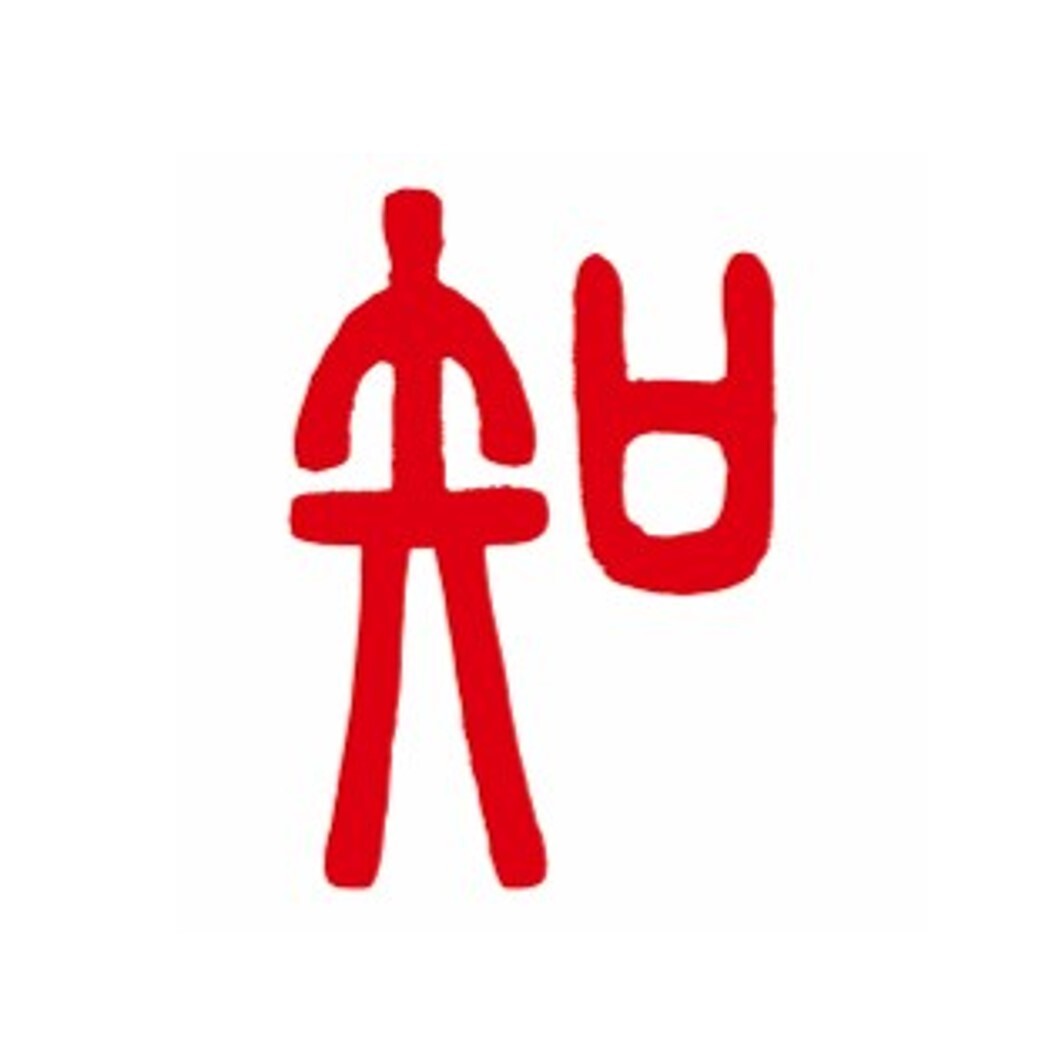
Author profile
Yang Yan
A Chinese researcher based in Japan shares insights on overseas consumer lifestyles, primarily focusing on China. Among my Chinese friends in Japan, I feel many are particularly passionate about their children's education.
-

Editor profile
Yusuke Tatsuda
I am responsible for building the Global Market Surfer website. I want my children to enjoy physical activity, so I send them to gymnastics classes.
 Global Market Surfer
Global Market Surfer CLP
CLP
